XXIII
Crossing Japan Blue with Moscow Blue
RUBRIEK: Guppy Kweek English Translation
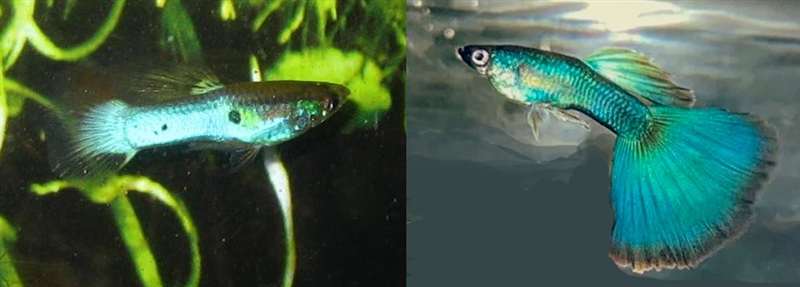
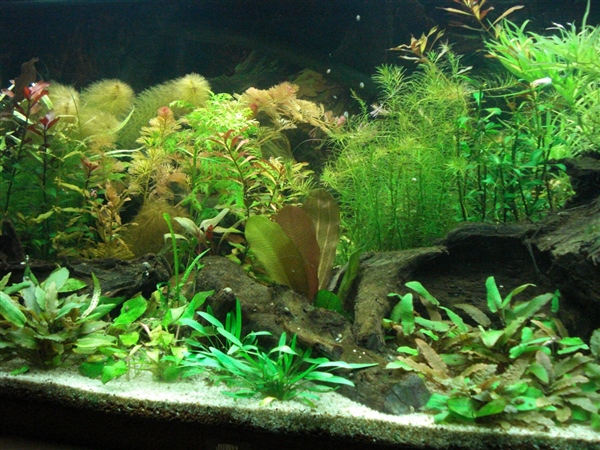
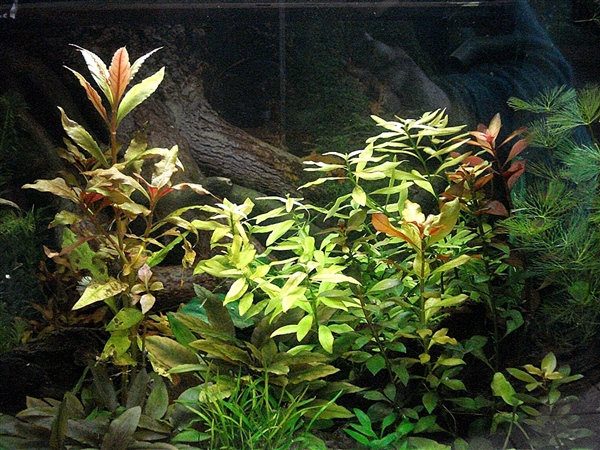
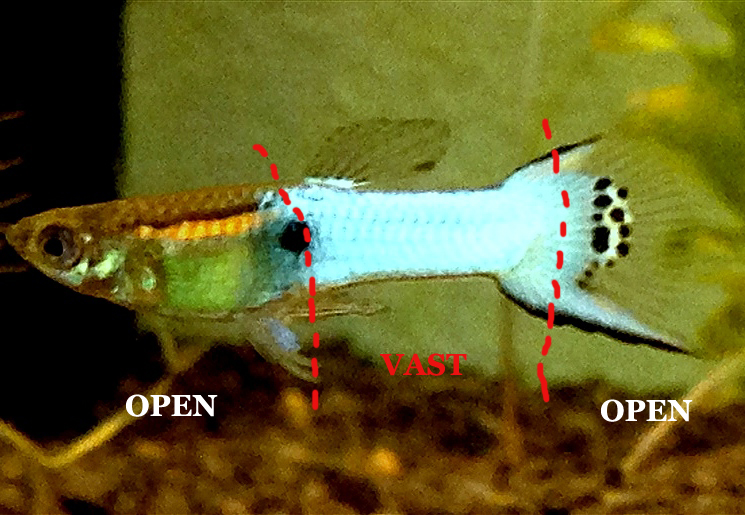
The most frequently asked question on Guppy forums and Guppy groups on Facebook is this: (at the photo of guppies bought or received) which strain is this? A bit lazy if you ask me, because the least one can do when acquiring a new fish is to inquire about its name. And moreover: nowadays one only has to google to find out. Anyway, it is human, as a proud owner, to want to put his new fish in the show window and to fish for response.
Most of all, the proud owner wants to be in possession of a special strain, because that is the ambition of every self-respecting guppy enthusiast. Unfortunately, things often go wrong here: one cannot expect big exporters who breed and sell guppies en masse to suddenly start offering special strains. And because the guppy is a fish that is very easy to breed, the local market is really flooded with an oversupply of often free, but at the same time completely mongrel guppies.
Most guppy owners can reconcile having "ordinary" guppies in their tank, and then find pleasure in keeping and breeding this colorful fish in its own right. But now and then someone steps up with the ambition of breeding his "own" new strain. As recently, there was an "urgent" message on seve-ral Facebook groups from someone who set out to cross Japan Blue with Moscow Blue. First of all, that initial remark: haste and hurry, is extremely counterproductive in these matters. What a guppy breeder needs to deve-lop in the first place is patience, and a good power of observation to detect differences. Experience and expertise are things that one builds up along the way, and certainly not things that can be forced in record time. Moreover, cultivating a new strain is not that easy, but it takes a lot of time. And those who do this for monetary motives, hoping to make money out of it, will certainly be disappointed in temperate regions and with the increased energy rates. Breeding guppies is a hobby in the literal and figurative sense.
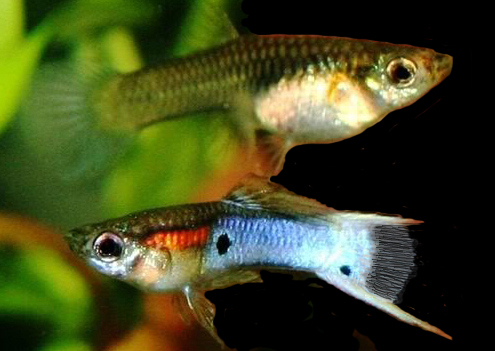
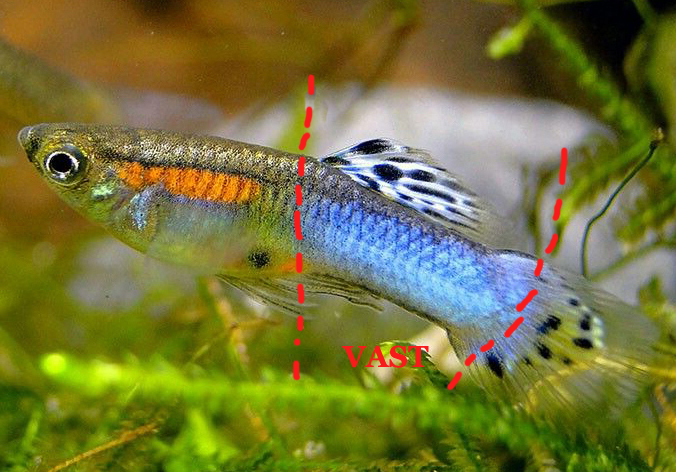
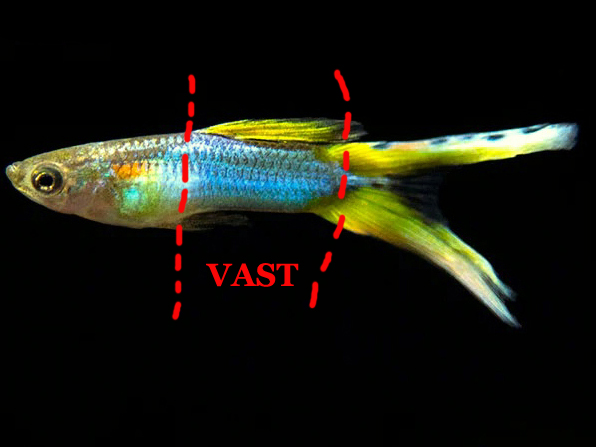

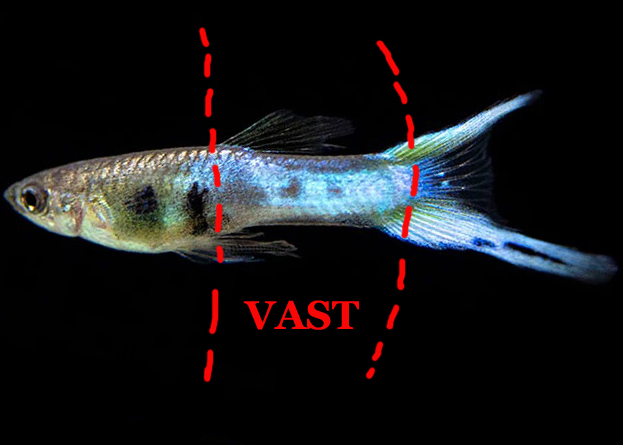
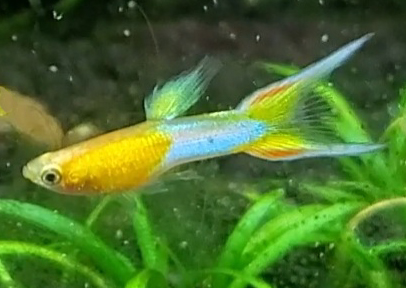
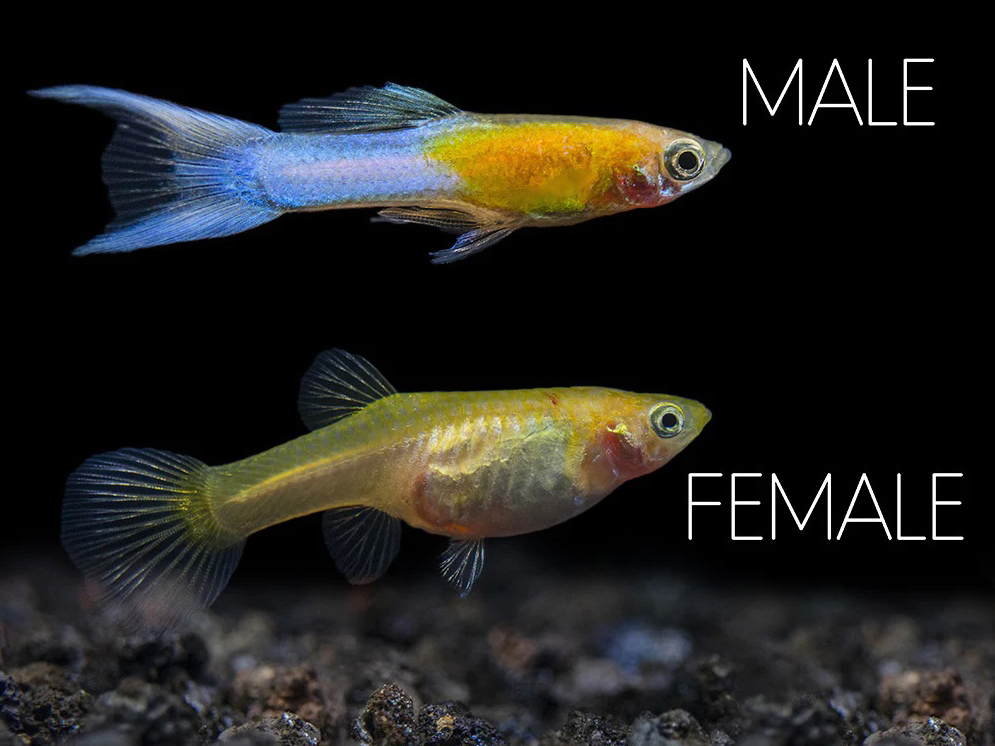
Every investigation starts with asking questions. In this case the basic question is: WHY would one want cross a Japan Blue with a Moscow Blue? Because one can? Wrong answer! Japan Blue -or: Aquamarine- is a mutation that was found in a wild-caught population in Japan (in Kanagawa) in the 1980s, and from then was subsequently crossed with other strains. But regardless of its exact origin, this trait is primarily a fixed pattern, a fixed genome, which is passed down unchanged from generation to generation. This makes it very simple for breeders: because the back body is always blue, they no longer have to worry about that, and they can cross and select with strains that apply other colors OUTSIDE this zone, or select by sword length (see series of photos on the left) .
There are also two major disadvantages associated with these fixed genomic complexes that are patterns. Firstly, it is difficult to get rid of them: once they are introduced into the culture, they stay. And secondly: as far as the Japan Blue is concerned, absolutely NOTHING can be registered on the females. Like the females from the wild caught and the females from the early years of the guppies, they show NO characteristics at all (see photo above). It is then said that Japan Blue is sometimes Y-linked, sometimes X-linked. The person in question had a problem with HOW to distinguish and "mark" those females from each other. Well the answer to this is simple: it is impossible, because all those females (phenotypes) look alike. The preparation of genetic markers, moreover, takes place on the map with the DNA code itself, and consists of sequences, never of a single gene. So there are a few popularized and highly simplified views about genetics circulating in guppy circles that have NOTHING to do with practice at all. The practice of guppy breeding consists of: closely observing what one sees (=the phenotypes), and accurately recording the results of the breeding (F1 , F2, ....) to get a clear view of what is fixed and unchanged, and what is open and can change. In this way one gets a good view of WHAT a specific pattern exactly hold on.
That Japan Blue is a kind of pants that the fish wears over its hind body, is evident from the fact that in "gold colored" or blonde guppies the front body is golden, but the back body..... remains blue. With the males, of course, because the females are completely blond (see photos on the left). So the statement that a certain property is either X-linked or Y-linked is actually meaningless. It doesn't really matter that much, because for breeding you always need the TWO sexes, and they are BOTH important. So to speak, keeping a stock of "neutral" females that could be used for rapid incrossing of male lines is an outdated procedure, that has never proved its added value. What we are seeing more and more now is that females are also starting to show more and more characteristics of the strain through crossing-over. This is especially the case with the Leopard, Crumble ("Tiger") and Dragon strains (see photos below).
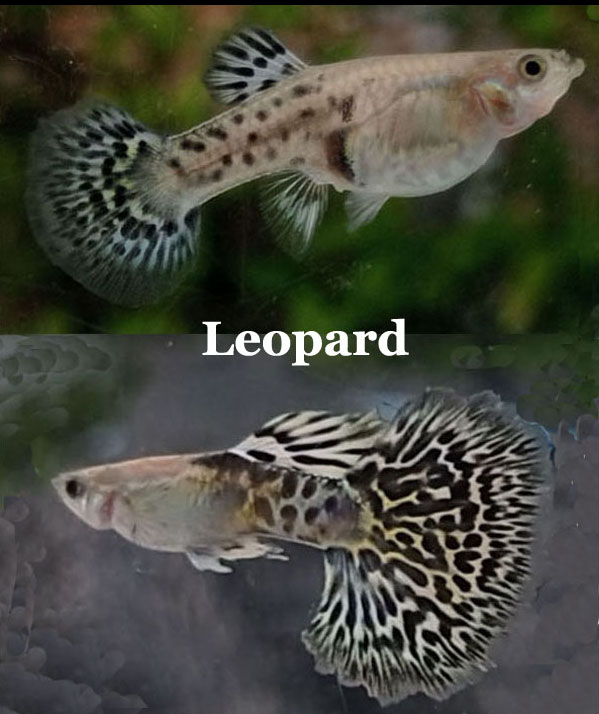
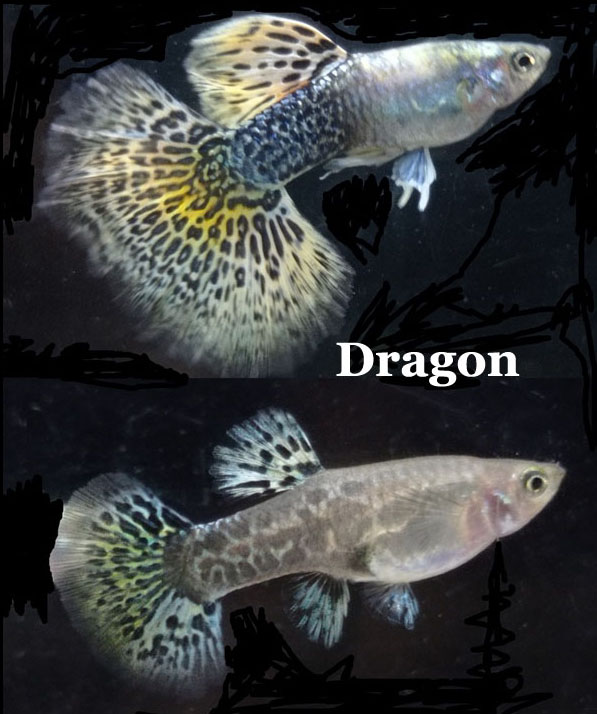
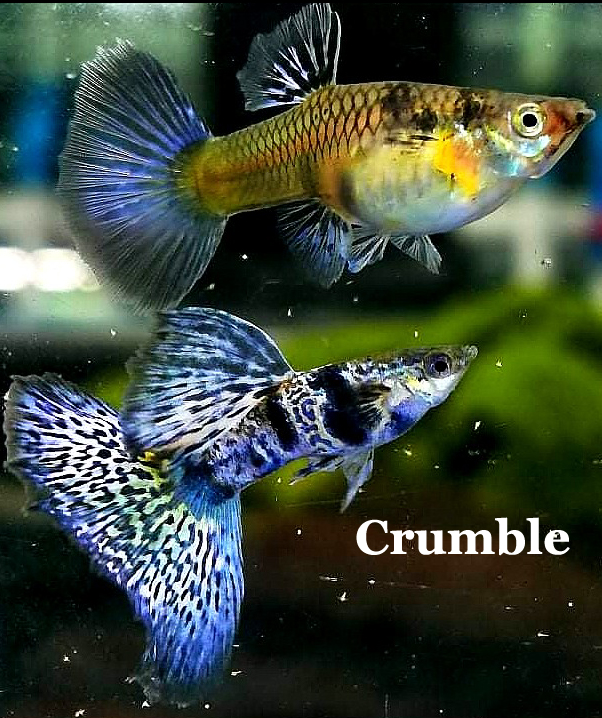
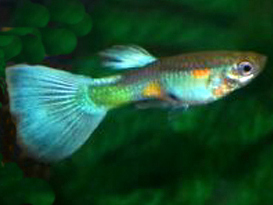
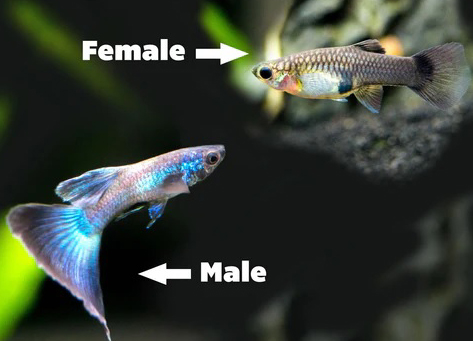
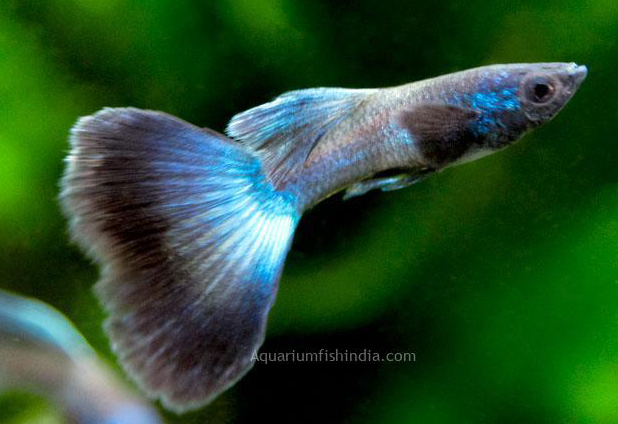
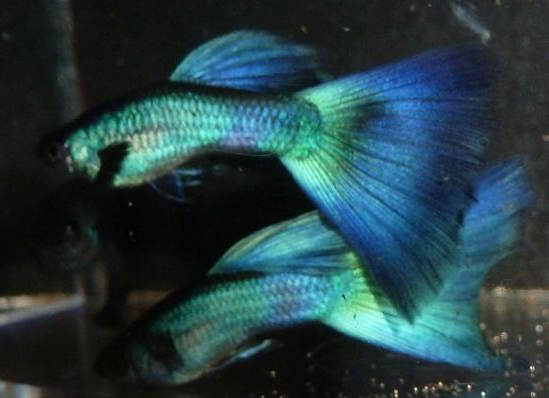
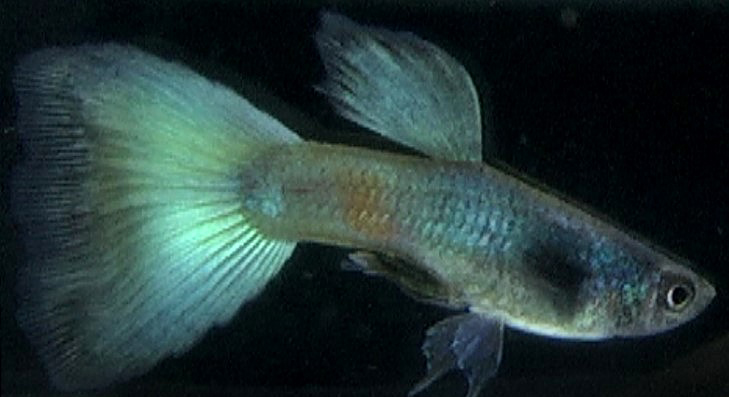
Similarly, Moscow Blue is a fixed pattern, but it was brought about by guppy breeders. Until the 1970s it was a painstaking task to breed completely blue triangles: time and again there were small islands of other colors on the body and tail fin. Not that this bothered ME, because as far as I'm concerned these "multicolor" fish always had a very nice iridescent blue, which brings out the blue best. Moreover, I have never been in favor of monochronous guppies - guppies in a single color (red, white, black, ....)- because I think this detracts from the color splendor and the variety richness that the guppy naturally has. But so far, because in the 1980s a way was developed in Russia to breed a uniform blue guppy. The starting point for this was the Metalhead, a zone on the front body that appears metallic dark blue, can occur in a number of strains and can vary in color and intensity according to the guppy's "mood". There is not only Moscow Blue, but also Green, Green Blue and Black. These different shades can be observed depending on the position of the guppy in relation to the inciden-ce of light, so that this gives Moscow not so much a reflective-shining blue as a moving-radiating blue. Kind of like looking through binocular glasses or 3-D glasses. It is not easy to "catch" the fish in one picture.
In practice, Moscow can be seen as a kind of grey, close-fitting ski or skating suit that the fish wears. An overcoat that hides all other colors because they are UNDER the coat that covers everything. I wouldn't really call it "metal" because metal shines and glitters; it is more like the gloss of food can; hence also the grey-black veils at the end of the caudal fins, on the pectoral fins; and on the caudal fins of the females. When the incidence of light is right, the fish can suddenly light up like a glow. On closer inspec-tion, the Moscow pattern also appears not to consist of one homogeneous "suit", but to be made up of different parts: of course the metalhead spot on the front body from which the complete complex was built, then a vertical zone on the body, the green caudal zone and finally the terminal veil on the caudal fin. These 4 central zones, were then connected by filler connections: like buildings connected by walls to make one connected stronghold.
Not only can one find the origin history of the strain in it, but one can also recognize the reverse trajectory, namely what will happen when the complex will be broken up by regression. Guppy breeders may then build up certain patterns to uniformity through selection; there is also always a natural force in the opposite sense active to keep intact the diversity of the genetic potential and to protect it against this genetic impoverishment. And precisely the "filling sites" or connecting links are the weakest links , namely THERE where the complex will again be broken open into its centers or components by the regression to the "wild form".
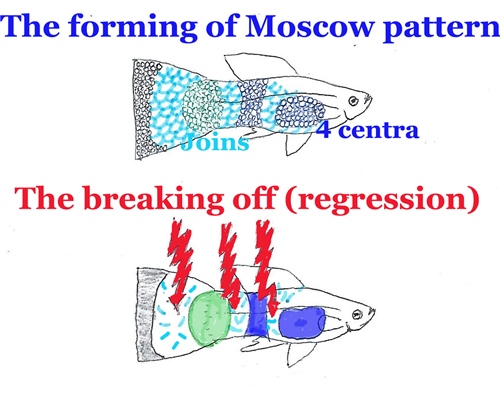
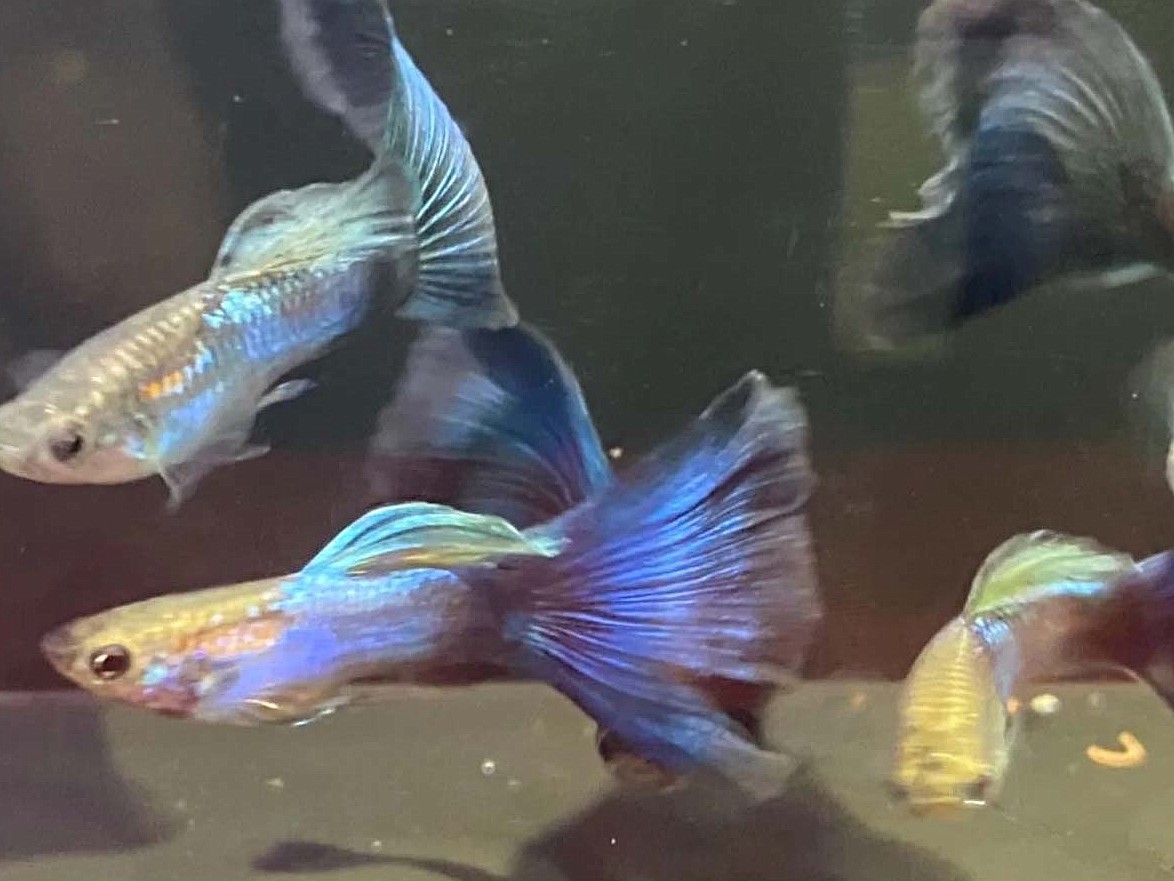
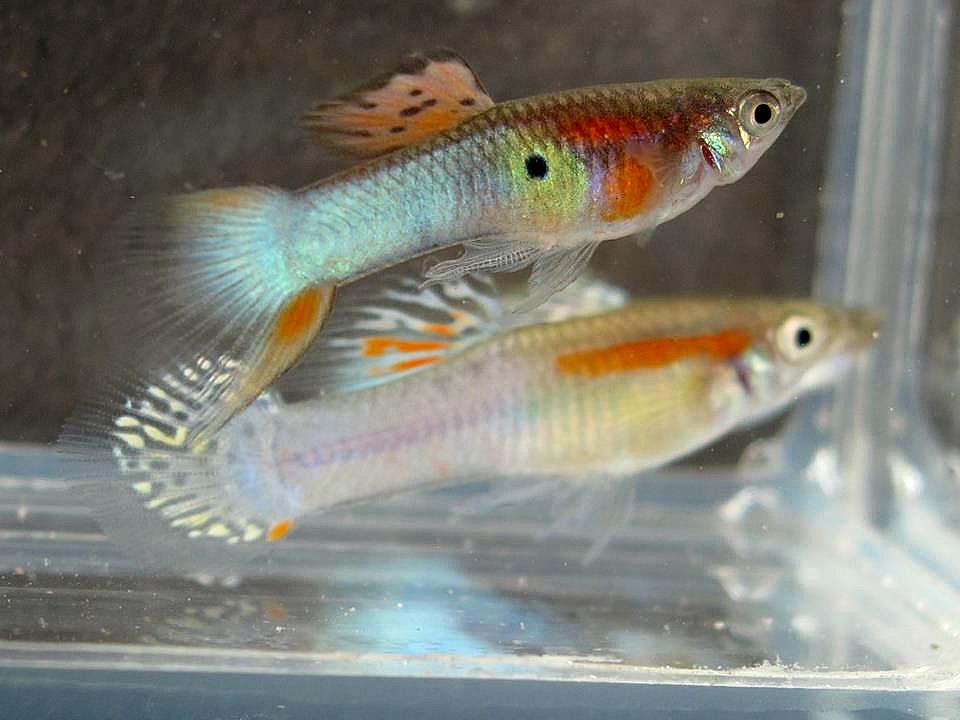
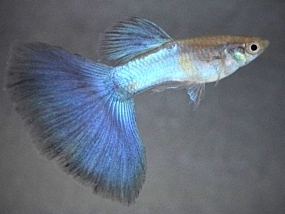
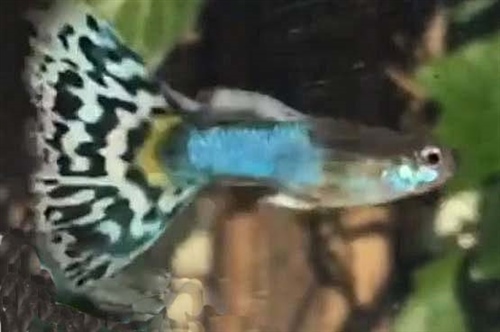
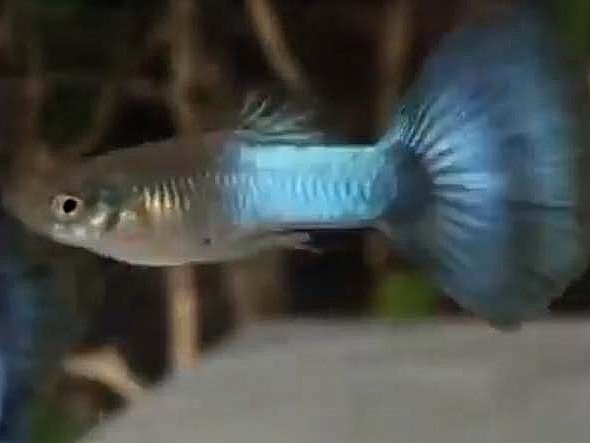
Keeping this in mind, one must realize WHAT is going to happen when one crosses Japan Blue with Moscow Blue. With that caveat first: WHY would one wish to cross two strains, each of which is intrinsically blue? To "see" what will happen? If a certain crossing does NOT hold the promise of an improvement, it is not worth the effort to "mix" 2 strains together WITH-OUT insight. Heredity is not a chemical reaction in which mixing two substances together produces a new product as a reaction. Do not forget that it takes 6 generations or about 3 to 4 years before one can evaluate his result. Thinking before starting is therefore advisable.
Anyway: what WILL happen if you try to put on a ski suit over close-fitting leather trousers? Those two are going to "fight" with each other, because they cover the same domain. So what will happen, is that BOTH strains will go into regression, because both are fixed patterns that partly overlap each other and there is not enough room for both next to each other. Consequence: the Moscow pattern is pulled open in its "building blocks", and will produce guppies with Metalhead, with EGI or better Green Caudal (Star), and with gray-black as residue in the tail fin (see figure below).
The Japan Blue pattern covers a smaller area of the guppy's body, and will rather decrease in intensity: fade away, become paler, shrink, and fade from blue to purplish. I have a picture on the right where you can see this degradation of the Japan Blue over two phases.
Having said that, it of course depends on WHICH Japan Blue one is going to use for the crossing. If one uses one with double swords like the "primeval form", one gets in his offspring a lot of males with intermediate swords of different lengths, and with all kinds of irregular tail fins (see here ). If one uses a Japan Blue with a triangle tail, the truth compels me to note that this breeding product has already been obtained, and that the "experiment" to be set up would therefore be useless: the Japan Blue BlueTail. In the photos on the left, one can notice in the color differences between the rear body and tail fin that this is NOT a single, connected pattern, but that there is Japan Blue + blue triangle. Similarly, Japan Blue + Mosaic triangle has already been bred. WHERE the blue triangle comes from is not mentioned, but there are a number of usual suspects: the Tuxedo strains that can develop beautiful electric blue (see Blue Neon) to deep navy blue - hence sometimes "leftovers" of black here and there and the absence of color on the forebody- and the "regular" strains with blue triangle tails.
It will come as no surprise that very little can be found on the Internet or in publications about crossings of both strains. In the past, a few growers will probably have tried it, but will have quickly realized that the outcome was rather poor and unpromising. It should also be noted that NEW strains have seldom been the product of deliberate attempts to create something new, but often emerged as accidental and aberrant "by-product" of regular breeding. A mutation is not formed on command and prescrip-tion, that is the illusion of the makeable gup (in line with the makeable human). So a little humility is in order here, instead of pretending to be Dr. Frankenstein or playing the god of his tanks. Calmly and happily continue breeding his favorite guppies, and when an "anomaly" due to a mutation suddenly occurs, be attentive and grateful. That's the right attitude.
